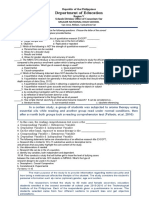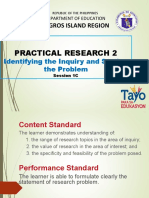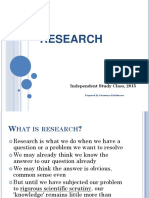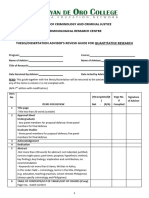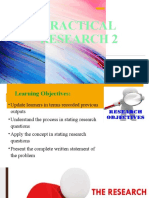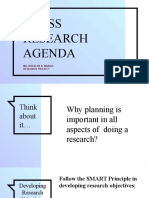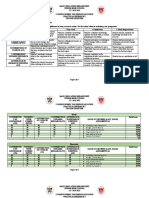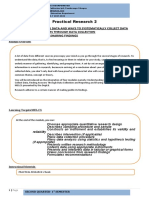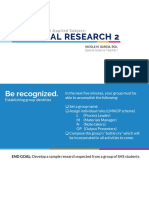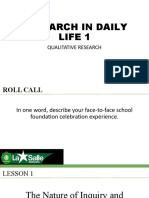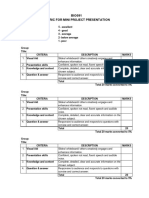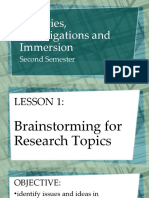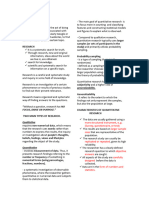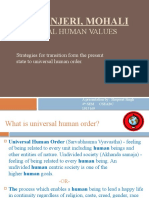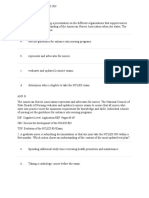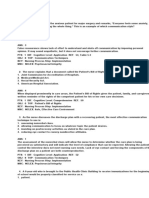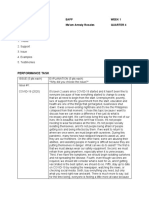0% found this document useful (0 votes)
148 views5 pagesPractical Research 2 - Lesson 1
Qualitative research uses non-numerical data like words to understand people's thoughts, beliefs, and experiences. It involves surveys, observations, and interviews to explore a topic through open-ended questions. Quantitative research measures and analyzes numerical data to test hypotheses and make generalizations about populations. It relies on larger sample sizes and structured tools like questionnaires. There are different types of quantitative research including descriptive, correlational, causal-comparative, quasi-experimental, and experimental designs.
Uploaded by
Chin KwonCopyright
© © All Rights Reserved
We take content rights seriously. If you suspect this is your content, claim it here.
Available Formats
Download as PDF, TXT or read online on Scribd
0% found this document useful (0 votes)
148 views5 pagesPractical Research 2 - Lesson 1
Qualitative research uses non-numerical data like words to understand people's thoughts, beliefs, and experiences. It involves surveys, observations, and interviews to explore a topic through open-ended questions. Quantitative research measures and analyzes numerical data to test hypotheses and make generalizations about populations. It relies on larger sample sizes and structured tools like questionnaires. There are different types of quantitative research including descriptive, correlational, causal-comparative, quasi-experimental, and experimental designs.
Uploaded by
Chin KwonCopyright
© © All Rights Reserved
We take content rights seriously. If you suspect this is your content, claim it here.
Available Formats
Download as PDF, TXT or read online on Scribd
/ 5




